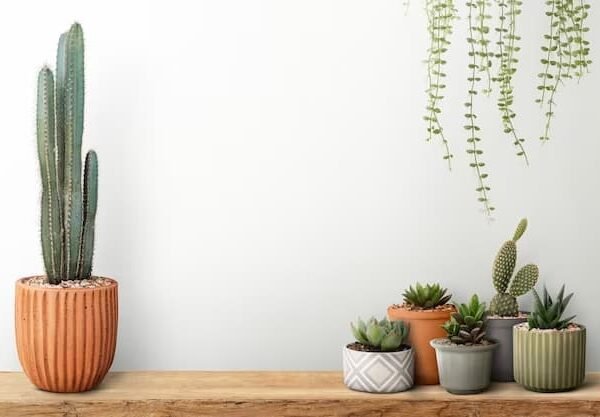Maximizing Natural Light: Bright Ideas for Home Interiors
Natural light is an essential factor in interior design, influencing not only the aesthetics but also the mood and functionality of a room. Natural light has the unique ability to not only make your home feel more open and inviting but also to enhance your overall well-being. In this blog, we’ll explore the art of harnessing natural light to create brighter, more vibrant, and energy-efficient interiors.
From understanding why it matters to assessing your home’s potential, implementing smart design and layout choices, utilizing reflective surfaces, incorporating indoor plants, and reducing clutter, we’ll provide you with a comprehensive roadmap to make your living spaces shine with natural radiance.
Whether you’re renovating, redecorating, or simply looking to infuse your home with light and life, our guide will help you uncover the key to creating spaces that are not only beautiful but also conducive to a happy and healthy lifestyle.
The Importance of Natural Light in Interior Design

Before delving into the strategies to maximize natural light, it’s crucial to understand why it’s such a fundamental aspect of interior design. Natural light offers a multitude of advantages:
1. Health and Well-being
Exposure to natural light has been linked to improved mental and physical well-being. It can enhance mood, reduce stress, and even boost productivity.
2. Energy Efficiency
Maximizing natural light reduces the need for artificial lighting during the day, which, in turn, lowers energy consumption and utility bills.
3. Visual Comfort
Well-distributed natural light reduces glare and harsh shadows, providing visual comfort for reading, working, and relaxing.
4. Aesthetics
The interplay of sunlight with the interior elements creates a dynamic, ever-changing ambiance, enhancing the aesthetics of the space.
Assessing Your Home’s Natural Light Potential
Before implementing strategies to maximize natural light, it’s essential to evaluate your home’s current natural light sources and potential obstacles. Here are the key considerations:
1. Orientation
Take note of the cardinal orientation of your home. In the Northern Hemisphere, north-facing rooms receive consistent, soft light throughout the day, while south-facing rooms get more direct sunlight. East-facing rooms enjoy the morning sun, and west-facing rooms bask in the afternoon warmth.
2. Windows and Doors

Inspect the placement, size, and condition of windows and doors. Clean, unobstructed glass allows more light to enter, while damaged or dirty windows can diminish its quality.
3. Surrounding Environment
Consider external factors like trees, neighboring buildings, or structures that may block or filter natural light. Identify opportunities to mitigate these obstacles if they are hindering your home’s light potential.
4. Interior Obstructions
Evaluate the layout and placement of furniture and decor within your home. Reorganizing these elements can make the most of available natural light.
Strategic Design and Layout
Once you’ve assessed your home’s natural light potential, it’s time to implement design and layout strategies to maximize its impact:
1. Light-Colored Walls
Opt for light and reflective wall colors. White, pastel shades and light neutrals bounce natural light throughout the room, creating a brighter, airier space.
2. Mirrors
Strategically placed mirrors can amplify natural light by reflecting it into darker corners. Mirrored furniture or decor items also contribute to this effect.
3. Window Treatments
Choose window treatments that allow you to control the amount of light you want. Sheer curtains or light-filtering blinds offer privacy while still letting in ample natural light. Avoid heavy drapes that block out light when drawn.
4. Open Floor Plans
Consider open floor plans that allow light to flow from room to room. Removing unnecessary partitions and barriers creates a more spacious and sunlit environment.
5. Glass and Translucent Materials
Incorporate glass, acrylic, or translucent materials into your interior design. They can be used for room dividers, doors, or furniture to enable light transmission while maintaining a sense of separation.
6. Skylights
Skylights are an excellent addition to spaces that lack adequate wall windows. They bring in abundant natural light from above and can be equipped with blinds for control.
Utilizing Reflective Surfaces

Utilizing reflective surfaces strategically can significantly enhance the natural light in your home:
1. Glossy Flooring
Opt for glossy or polished flooring materials such as hardwood, tile, or stone. Their reflective quality amplifies the light in the room.
2. Shiny Decor
Incorporate shiny or metallic decor items like silver-framed mirrors, metallic vases, or glass coffee tables to scatter light throughout the space.
3. Furniture Selection
Choose furniture with reflective surfaces like glass or chrome accents. This not only adds a modern touch but also contributes to the overall brightness of the room.
Indoor Plants
Introducing indoor plants into your interior decor not only adds a touch of nature but also enhances natural light in various ways:
1. Positioning
Place indoor plants near windows to benefit from the available light. They can act as a natural filter, softening direct sunlight while adding texture and life to the room.
2. Greenery

Consider selecting light-loving plants, such as succulents or spider plants, which thrive in bright conditions and require minimal maintenance.
3. Vertical Gardens
For homes with limited space, vertical gardens are a creative way to bring in greenery and maximize natural light simultaneously. They are particularly suited for apartments and smaller living spaces.
If you plan to design your balcony with greenery, Contact us
Multi-Purpose Furniture
In compact living spaces, multi-purpose furniture is a game-changer for maximizing natural light:
1. Daybeds and Sofa Beds
Daybeds and sofa beds are versatile solutions. They serve as seating during the day and transform into sleeping arrangements when needed, leaving more space for light to fill.
2. Foldable Tables
Opt for foldable dining tables or desks that can be stowed away when not in use. This flexibility allows the room to feel more open and uncluttered.
Minimize Clutter
Clutter can cast shadows and impede the flow of natural light. To keep your space bright and inviting, practice effective decluttering:
1. Minimalist Design
Adopt a minimalist design approach by choosing furniture and decor items that serve a specific purpose and have clean lines. This helps create a clutter-free environment.
2. Storage Solutions

Invest in storage solutions such as built-in cabinets, under-bed storage, and wall-mounted shelves to keep belongings organized and out of sight.
Exterior Modifications
If you have the opportunity for exterior modifications, consider these options to enhance natural light:
1. Awnings
Installing retractable or fixed awnings can provide shade from direct sunlight, allowing you to enjoy natural light without the discomfort of excess heat.
2. Skylights and Sun Tunnels
Skylights and sun tunnels can be added to your home’s roof to capture and distribute daylight to interior spaces that lack windows. They’re particularly effective in dark or windowless areas like hallways and bathrooms.
3. Glass Doors

Replacing solid exterior doors with glass doors, such as sliding patio doors or French doors, can increase the flow of natural light into your home.
If you plan to renovate your house, please contact us
Conclusion
Maximizing natural light in interior spaces is a transformative journey that not only brightens your living environment but also positively impacts your physical and emotional well-being. From thoughtful interior design choices to embracing reflective surfaces, integrating greenery, and minimizing clutter, there are numerous strategies that can elevate the presence of natural light in your home. Whether you’re adapting your current space or planning future renovations, the keyword “natural light in interior” should remain central to your design philosophy. In the end, the beauty and practicality of well-lit interiors will enhance your daily life and create a


